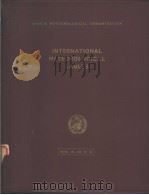《International Tables For X-Ray Crystallography Volume IV Revised and Supplementary Tables》
| 作者 | 编者 |
|---|---|
| 出版 | The Kynoch Press |
| 参考页数 | 366 |
| 出版时间 | 1974(求助前请核对) 目录预览 |
| ISBN号 | 无 — 求助条款 |
| PDF编号 | 812580658(仅供预览,未存储实际文件) |
| 求助格式 | 扫描PDF(若分多册发行,每次仅能受理1册) |
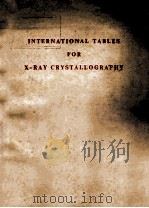
INTRODUCTION (James A.Ibers and Walter C.Hamilton)1
Purpose and Scope of the Tables1
Acknowledgments1
1.X-RAY WAVELENGTHS (J.A.Bearden)3
1.1.Comments on the Tables (James A.Ibers and Walter C.Hamilton)5
Table 1.1A.X-ray Wavelengths in A Units and in keV Arranged by Atomic Number6
Table 1.1B.X-ray Wavelengths and Absorption Edges in A Units and in keV in Order of Increasing Wavelength20
2.ABSORPTION AND SCATTERING45
2.1.X-ray Cross Sections and Attenuation Coefficients (J.H.Hubbell,W.H.McMaster,N.Kerr Del Grande,and J.H.Mallett)47
2.1.1.Introduction47
2.1.2.Sources of Information47
2.1.2.1.Experimental Attenuation Coefficient Data47
2.1.2.2.Experimental Photoeffect Data48
2.1.2.3.Theoretical Photoeffect Data48
2.1.2.4.Theoretical Coherent Scattering Data48
2.1.2.5.Theoretical Incoherent Scattering Data48
2.1.3.Compilation Procedure48
2.1.3.1.Synthesis of Photoeffect Cross Sections from th Experimental and Theoretical Input Information48
2.1.3.2.Photoeffect Data Fitting49
2.1.4.Uncertainty of the Compilation Values50
Table 2.1A.Wavelengths and Energies Used for Tables 2.1B and 2.1C54
Table 2.1B.Total Cross Section (σ) in 10-24 cm2 per Atom for Selected X-ray Wavelengths55
Table 2.1C.Mass Attenuation Coefficients (μ/ρ) in cm2 g-161
2.1References67
2.2 Atomic Scattering Factors for X-rays (Don T.Cromer and J.T.Waber)71
Table 2.2A.Mean Atomic Scattering Factors in Electrons for Free Atoms and Chemically Significant Ions72
Table 2.2B.Coefficients for Analytical Approximation to the Scattering Factors of Table 2.2A99
Table 2.2C.Spherical Bonded Hydrogen Atom Scattering Factor102
Table 2.2D.Orbital Scattering Factors for Unfilled p,d,and f Orbitals for Atoms and Ions103
2.2.References147
2.3.Dispersion Effects148
2.3.1.Dispersion Corrections for X-ray Atomic Scattering Factors (Don T.Cromer)148
Table 2.3.1.Real and Imaginary Dispersion Corrections for Atomic Scattering Factors149
2.3.2.Dispersion Corrections and Crystal Structure Analyses (James A.Ibers)148
Table 2.3.2.Reciprocal Lattice Points Equivalent under the Operations of a Given Noncentrosymmetric Point Group151
2.3.References151
2.4.Scattering Factors for the Diffraction of Electrons by Crystalline Solids (P.A.Doyle and J.M.Cowley)152
2.4.1.Elastic Scattering from a Perfect Crystal152
2.4.2.Atomic Scattering Factors152
2.4.3.Approximations of Restricted Validity153
2.4.4.Relativistic Effects154
2.4.5.Absorption Effects154
2.4.6.Tables of Atomic Scattering Amplitudes for Electrons154
Table 2.4.6A.Atomic Scattering Amplitudes in A for Electrons for Neutral Atoms155
Table 2.4.6B.Atomic Scattering Amplitudes in A for Electrons for Ionized Atoms164
Table 2.4.6C.Parameters Useful in Electron Diffraction as a Function of Accelerating Voltage,E174
2.4.References175
2.5.Complex Scattering Factors for the Diffraction of Electrons by Gases (R.A.Bonham and Lothar Schafer)176
2.5.1.Introduction176
2.5.2.Complex Atomic Scattering Factors for Electrons176
2.5.2.1.Elastic Scattering Factors for Atoms176
2.5.2.2.Elastic Scattering Factors for Ions177
2.5.2.3.Total Inelastic Scattering Factors178
2.5.2.4.Corrections for Defects in the Theory of Atomic Scattering178
2.5.3.Molecular Scattering Factors for Electrons178
Table 2.5A.Partial Wave Elastic Scattering Factors for Neutral Atoms181
Table 2.5B.Partial Wave Ionic Scattering Factors257
Table 2.5C.Inelastic Scattering Factors258
Table 2.5D.Inelastic Scattering Factors for He and Ne268
2.5.References269
2.6.neutron Scattering Amplitudes for Elements and Isotopes (G.E.Bacon)270
Table 2.6.Neutron Nuclear Scattering Data for Elements and Isotopes270
2.6.References271
3.ANGLE SETTINGS FOR FOUR-CIRCLE DIFFRACTOMETERS (Walter C.Hamilton)273
3.1.Introduction275
3.2.Definitions276
3.2.1.The Diffractometer276
3.2.2.Coordinate Systems276
3.2.2.1.Diffractometer-Fixed Axis System277
3.2.2.2.Crystal-Fixed Orthonormal System277
3.2.2.3.The Direct Crystal Axes277
3.2.2.4.The Reciprocal Crystal Axes277
3.2.2.5.Coordinates of a Reciprocal Vector277
3.2.2.6.Crystal Rotation277
3.2.2.7.The Orientation Matrix277
3.3.Calculation of Setting Angles278
3.3.1.General Solution278
Table 3.3.1.Various Settings for Observing a Reflection on a Four-Circle Diffractometer278
3.3.2.Rotation Around the Diffraction Vector278
3.3.3.Computational Aspects279
3.4.Determination of U,the Orientation Matrix280
3.4.1.Determination of U from Three Reflections280
3.4.2.Determination of U from Two Reflections280
3.4.3.Least-Squares Refinement of Cell Constants and Orientation Angles280
3.5.Measurement Procedures282
Table 3.5A.Translational Errors for Various Crystal Settings282
Table 3.5B.Equivalent Crystal Setting Angles for Crystal Alignment on a Four-Circle Diffractometer283
3.References284
4.TESTS FOR STATISTICAL SIGNIFICANCE (Walter C.Hamilton)285
4.1.Introduction287
4.2.Tests of the R-Factor Ratio,R288
Table 4.2.Significance Points for the R-Factor Ratio,R289
4.3.Tests for the Consistency of Weights293
4.3.1.Tests on S,the Standard Deviation of the Observation of Unit Weight293
4.3.2.Normal Probability Plots293
Table 4.3.2A.Percentage Points xi of the Cumulative Normal Distribution Function295
Table 4.3.2B.Expected Values ξ(i/n) of Ranked Normal Deviates296
Table 4.3.2C.Expected Values ξ(i/n) of Ranked Normal Deviates Compared with Approximate Values301
Table 4.3.2D.Expected Values of ith Ranked Moduli of Normal Deviates in Samples of Size n302
Table 4.3.2E.Expected Values of Extreme Ranked Moduli of Normal Deviates306
4.References310
5.THERMAL-MOTION ANALYSIS USING BRAGG DIFFRACTION DATA (C.K.Johnson and H.A.Levy)311
5.1.Introduction313
5.2.Thermal Motion of Independent Atoms314
5.2.1.The Gaussian Density Function Model314
5.2.2.Properties of the Dispersion Matrix314
5.2.2.1.Mean-Square Displacement314
5.2.2.2.Probability Ellipsoids314
5.2.2.3.Positive-Definite Matrix315
5.2.2.4.Transformation Properties315
5.2.2.5.Principal Axis Transformation315
5.2.2.6.Cartesian Coordinate Systems and the Reporting of Results315
5.2.2.7.Contraction and Expansion316
5.2.3.Expansions based on the Gaussian Model316
5.2.3.1.Gram-Charlier Series Expansion316
5.2.3.2.Cumulant Expansion317
5.2.4.Models based on Curvilinear Density Functions317
5.2.4.1.Density Functions on a Circle317
5.2.4.2.Density Functions on a Sphere318
5.2.4.3.The Quasi-Gaussian Approximation319
5.3.Thermal Motion of a Rigid Body320
5.3.1.Rigid Motions320
5.3.2.The 6-Space of rotation and Translation320
5.3.3.The Center of Reaction321
5.3.4.Trace-of-S and Geometrical-Arrangement Singularities321
5.3.5.Non-Intersecting Screw Axes321
5.4.Correction of Interatomic Distances and Angles323
5.4.1.The Rigid-Body Model323
5.4.2.The Riding Model323
5.5.Site Symmetry Restrictions on Thermal-Motion Tensor Coefficients324
Table 5.5A.Site Symmetry Table325
Table 5.5B.Symmetry Restrictions of Coefficients in Second-Order Tensors328
Table 5.5C.Symmetry Restrictions on Coefficients in Third-Rank Symmetric Polar Tensors329
Table 5.5D.Symmetry Restrictions on Coefficients in Fourth-Rank Symmetric Polar Tensors331
Table 5.5E.Symmetry Restrictions on Coefficients in Second-Rank Axial Tensors332
5.References335
6.DIRECT METHODS FOR STRUCTURE DETERMINATION:ORIGIN SPECIFICATION,NORMALIZED STRUCTURE FACTORS,FORMULAS,AND THE SYMBOLIC-ADDITION PROCEDURE FOR PHASE DETERMINATION (J.Karle)337
6.1.Origin Specification339
6.1.1.Centrosymmetric Space Groups339
6.1.2.Noncentrosymmetric Space Groups341
6.1.3.Application344
Table 6.1A.Seminvariant Vector,Modulus,and Phases for the Conventionally Primitive Centrosymmetric Space Groups340
Table 6.1B.Seminvariant Vector,Modulus,and Phases for the Conventionally Centered Centrosymmetric Space Groups341
Table 6.1C.Seminvariant Vector,Modulus,and Phases for the Conventionally Primitive Noncentrosymmetric Space Groups342
Table 6.1D.Seminvariant Vector,Modulus,and Phases for the Conventionally Centered Noncentrosymmetric Space Groups345
Table 6.1E.Examples of Sets of Phases and Values for Origin Specification in Noncentrosymmetric Space Groups347
6.2.Normalized Structure Factors350
Table 6.2.Selected Statistical Properties of Normalized Structure-Factor Magnitudes351
6.3.Phase-Determining Formulas352
6.3.1.Introduction352
6.3.2.Centrosymmetric Crystals352
6.3.3.Noncentrosymmetric Crystals353
6.3.4.Auxiliary Phase-Determining Formulas353
6.4.Symbolic-Addition Procedure for Phase Determination:X-ray and Neutron Diffraction355
6.4.1.Introduction355
6.4.2.Centrosymmetric Crystals355
6.4.3.Noncentrosymmetric Crystals356
6.References358
7.SUBJECT INDEX FOR VOLUMES Ⅰ,Ⅱ,Ⅲ,AND Ⅳ359
1974《International Tables For X-Ray Crystallography Volume IV Revised and Supplementary Tables》由于是年代较久的资料都绝版了,几乎不可能购买到实物。如果大家为了学习确实需要,可向博主求助其电子版PDF文件(由 1974 The Kynoch Press 出版的版本) 。对合法合规的求助,我会当即受理并将下载地址发送给你。
高度相关资料
-
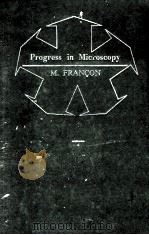
- PROGRESS IN MICROSCOPY
- 1961 PERGAMON PRESS
-

- TABLES FOR ROCKET AND COMET ORBITS
- NATIONAL BUREAU OF STANDARDS
-

- INTERNATIONAL TABLES FOR X-RAY CRYSTALLOGRAPHY VOL 1
- 1974 THE KYNOCH PRESS
-
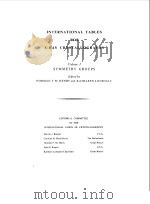
- INTERNATIONAL TABLES FOR X-RAY CRYSTALLOGRAPHY
- 1952 THE INTERNATIONAL UNION OF CRYSTALLOGRAPHY
-
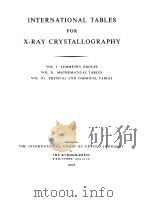
- INTERNATIONAL TABLES FOR X-RAY CRYSTALLOGRAPHY VOL III
- 1962 THE KYNOCH PRESS
-
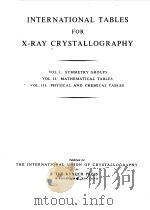
- INTERNATIONAL TABLES FOR X-RAY CRYSTALLOGRAPHY
- 1959 THE INTERNATIONAL UNION OF CRYSTALLOGRAPHY
-
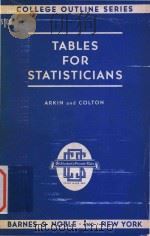
- Tables for statisticians
- 1950 Barnes & Noble
-
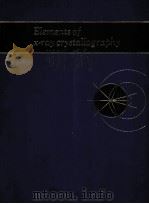
- ELEMENTS OF X-RAY CRYSTALLOGRAPHY
- 1968 MCGRAW-HILL BOOK COMPANY
-
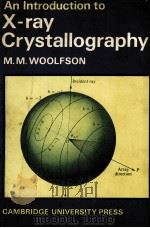
- X-RAY CRYSTALLOGRAPHY
- 1970 CAMBRIDGE UNIVERSITY PRESS
-
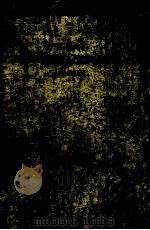
- X-RAY CRYSTALLOGRAPHY BOUMAN
- 1951 NORTH·HOLLAND PUBLISHING COMPANY AMSTERDAM
-
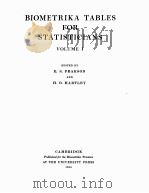
- BIOMETRIKA TABLES FOR STATISTICIANS VOLUME I
- 1954 AT THE UNIVERSITY PRESS
-
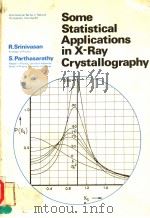
- SOME STATISTICAL APPLICATIONS IN X-RAY CRYSTALLOGRAPHY
- 1976 PERGAMON PRESS
提示:百度云已更名为百度网盘(百度盘),天翼云盘、微盘下载地址……暂未提供。➥ PDF文字可复制化或转WORD
